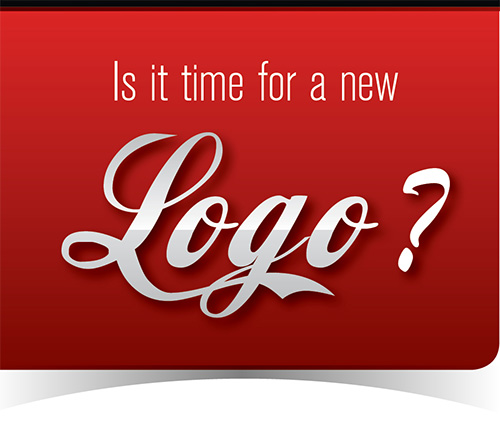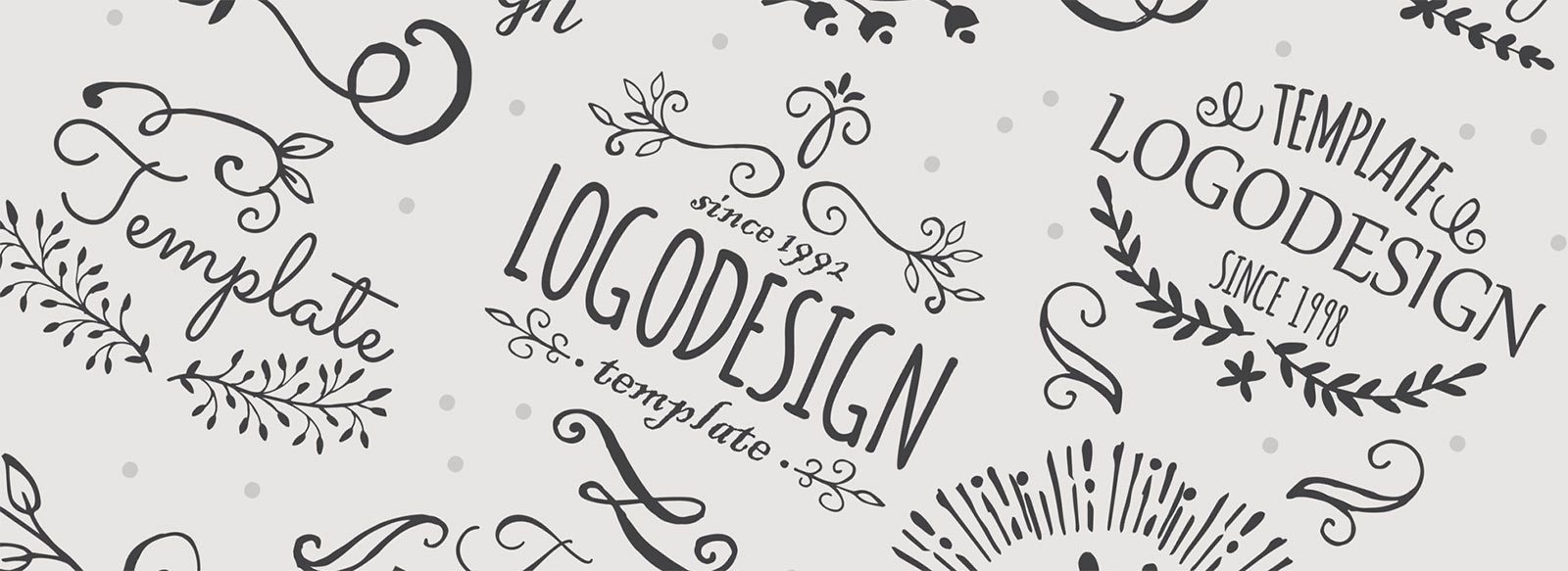 A company’s logo can be viewed as a business’ first impression on a customer, from the top of a letterhead, to a business card, to a countless number of other marketing materials, both print and online. The logo is a persistent, prevalent and powerful form of marketing, and says a lot about a business through its use of color, style, and iconography. The decision to redesign can be difficult, but might also be wise if your current logo is a dated design, less versatile, or no longer represents your business properly. The largest companies in the world redesign their logos regularly (places like Walmart, Target, Starbucks, and Warner Brothers) as a bold way to refresh their image or update/simplify their style. If you think your business is in need of a logo refresh, here are some tips to make sure your new brand is the compelling marketing tool it should be.
A company’s logo can be viewed as a business’ first impression on a customer, from the top of a letterhead, to a business card, to a countless number of other marketing materials, both print and online. The logo is a persistent, prevalent and powerful form of marketing, and says a lot about a business through its use of color, style, and iconography. The decision to redesign can be difficult, but might also be wise if your current logo is a dated design, less versatile, or no longer represents your business properly. The largest companies in the world redesign their logos regularly (places like Walmart, Target, Starbucks, and Warner Brothers) as a bold way to refresh their image or update/simplify their style. If you think your business is in need of a logo refresh, here are some tips to make sure your new brand is the compelling marketing tool it should be.
Concept
Before anyone puts pen to paper, there should be a long discussion on what your business represents. A logo needs to reflect the philosophy, style, values, and whatever else that makes your business unique, in the logo’s shapes, colors, and fonts.
Make a list of the top five words that describe your business, and you’ll be two steps ahead in the brainstorming/design process.
Color
Color has a subtle but distinct effect on the human brain; we all recognize and make connections to certain feelings or states of being when presented with colors. For example, red gives us a feeling of urgency, danger, or passion. Purple is usually associated with royalty, and exudes a luxurious, creative vibe. Take some time to look up the meaning of colors (lots of great references online, just google “meaning of colors”), and after you have your five descriptive words, figuring out your colors should be a cinch.
Don’t go overboard with color selection (rainbow colored logos are so 5 years ago). Instead, choose no more than three to use in your logo.
Design
Once you have your descriptive words and your colors, you’re ready to start brainstorming ideas. There’s no quick way to guide your business to a successful logo, it’s a matter of taking the time to hash out ideas, analyze them, then tear them apart and start over. It’s a process that absolutely must not be skipped or hurried. Many times a first idea is the not the best one, mainly because it would be everyone else’s first idea, and you want your logo design to be unique. For example, if you sell bicycles, DO NOT just make your logo a bicycle. Be clever, be unique, think about ways to show your business’ products and/or philosophy in a different way, but one that is instantly recognizable.
Ask around. Co-workers, friends and family are great resources for design ideas, and might have a different perspective of your business. Be cautious though, the decision should come down to one or two people, not you and your 25 consultants.
Use the internet for inspiration, there are millions of talented designers out there who have created unique and clever logos. Be careful not to plagiarize anyone though.
Avoid using “cookie cutter” logo design services or cheap crowd-sourced logo sites. You will cheapen the process, and at the same time might not get a logo that best represents your business.
Creation
Now that you have a brand new logo idea that instantly portrays your business in style, form, and color, it’s time to make it real. This might be the time to hire a designer if you don’t have access to (or knowledge of) the necessary software. Your logo should be built in vector (meaning the shapes & colors are determined using math, and built in a vector based program like Adobe Illustrator) and should not include things like photos, clipart, or multiple special effects (like glows or shadows).
DO NOT build your logo in a program such as Microsoft Word or Powerpoint, or you’ll undo all your hard preparation work and end up with a logo that’s not scalable, easily editable, or printer-friendly.
If you plan to use the logo on stationery, business cards, posters, vehicle graphics, and on the web (and you should), you need to have a logo that maintains its integrity in multiple mediums, so make sure you have a version with PMS colors, an RGB version for the web, a one color version, a black and white version, and a reverse version (ie. white logo on dark background). Any professional designer will know to do these versions for you, but it’s good to be aware of the many forms your logo will take.
Implementation
The final, and arguably most important step, after creating a new logo is to educate your customers, and transition them into the new brand as seamlessly as possible. It can be a source of confusion for some, so you’ll need to make the new logo and its connection to your business transparent and widespread. The process might take months, depending on the “mind-equity” your current logo has; plan on a period of transition where both logos might be in use in some form.
Use the opportunity to communicate with current and potential new customers by asking for feedback on the new design, but be prepared for good AND bad responses.
Create a multi-channel campaign that showcases your new logo, and have an offer or gift for people who provide feedback. Send a direct mail piece, with a personalized URL and/or email to establish multiple points of contact with a customer to spread the news.
Make sure to update your stationery as soon as possible, as well as any other place your old logo is displayed such as websites, social media, window and vehicle graphics, etc…
Create some brand new marketing materials with your logo (because a lot of times a new logo will mean a new style & color scheme that no longer compliments your current materials).
A new logo can be a difficult decision, but the benefits of a future-ready, fresh design outweigh the amount of preparation work involved. Also, you might find during the concept stage that you have a unique opportunity to re-evaluate how your business has evolved over time, and re-assess how you (and the public) view it. If you take the time and effort to go through all the steps of a logo redesign, you’ll find that it has the potential to be the most powerful marketing tool in your toolbox.
~ Dan Rickman, Ultra Graphics Marketing Coordinator

